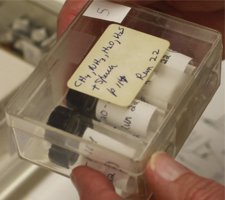
A new NASA-funded study shows how a chemical that smells like rotten eggs - hydrogen sulfide - may have played a role in the formation of life on Earth. The study's authors decided to revisit the old test tube classic experiments conducted in the 1950's by Stanley Miller, a graduate student at the University of Chicago.
The team analyzed samples from a variant of the experiment in 1958 in which Miller used carbon dioxide and hydrogen sulfide gases in the mixture. The results were "lost" for decades because, for unknown reasons, Miller never reported the analysis of results.
"Stanley told us several of us who hated to work with hydrogen sulfide because it smelled so bad and tends to make you fall ill, "said Jeffrey Bada, of Scripps Institution of Oceanography at the University of California at San Diego, who was a graduate student of Miller and author of the new study.
The review team has discovered that the old tube experiment created sulfur-containing amino acids, the first synthesis of a prebiotic simulation environment, according to team members, produces a large scale.
The results provide clues the roles that volcanic emissions - which are a natural source of hydrogen sulfide - may have played in producing the first organic compounds on our planet, NASA reported.
The picture shows the original box containing the samples stored by Stanley Miller in 1958. The label shows Miller's original script: p 114 refers to his notebook.
0 comments:
Post a Comment